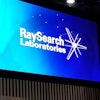The development of an ultraminiature x-ray source -- the size of a stick of gum -- could lead to tiny scanners like the tricorder of "Star Trek" fame in just a few years, according to researchers from the University of Missouri. The team's findings were published in IEEE Transactions on Plasma Science (January 2013, Vol. 41:1, pp. 106-111).
"In approximately three years, we could have a prototype handheld x-ray scanner using our invention," said Scott Kovaleski, PhD, associate professor of electrical and computer engineering. "The cellphone-sized device could improve medical services in remote and impoverished regions and reduce healthcare expenses everywhere."
In dentists' offices, for example, the tiny x-ray generators could be used to take images from the inside of the mouth shooting the rays outward, reducing radiation exposure to the rest of the head, Kovaleski said. The accelerator could also be used to create non-x-ray sources of radiation, replacing today's radioisotopes with a safer source of radiation that could be turned off in an emergency.
Based on a lithium niobate crystal, the device can produce more than 100,000 volts of electricity from 10 volts of electrical input with low power consumption, enabling it to run on batteries, the researchers explained.
"A mass of crystalline piezoelectric material is used to convert a low-voltage input electrical signal into a high-voltage output signal by storing energy in a longitudinally vibrating mechanical wave," they wrote in the IEEE abstract. "Output energy is extracted in the form of a high-voltage electron beam using a field-emission diode mounted on the surface of the crystal."



















